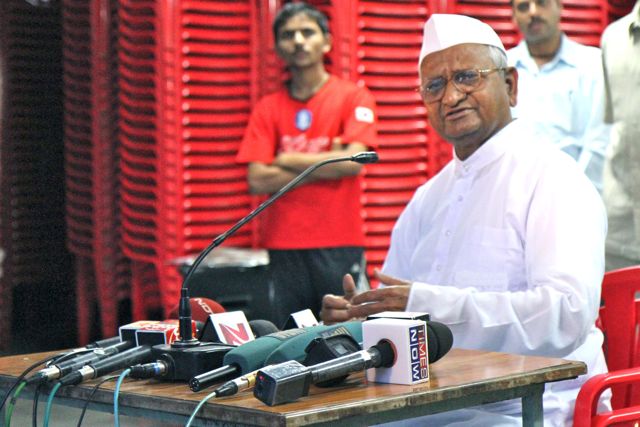
Who is Anna Hazare?
The 74-year-old farmer and former soldier who in early 2011 suddenly became the face of India's anti-corruption movement was unknown to most Indians and to almost everyone beyond. Over the course of the year he has become a daily staple in the Indian media, his hunger strikes and imprisonment fueling public outrage and pressure on the ruling Congress Party to enact sweeping new legislation to stem corruption that now looks endemic.
With increased notoriety has come skepticism, too. Some say Hazare is too naive or too uneducated (he completed only the seventh grade before joining the army and then returning to his home village in Maharashtra state as a farmer/organizer). Some question the civil-society leaders who have flocked to his side—and who may be more interested in their own political futures, the skeptics say, than in enactment of the sweeping reforms Hazare seeks.
Much of what has been written and broadcast about Anna Hazare has focused on the movement's goals, its tactics, and its interactions with the national media and political elite. The project this brief video introduces touches on those themes too. But at its core is something else—a look at Hazare's hometown, Ralegan Siddhi, and what his friends and neighbors say about the way he has applied Gandhian principles over 35 years and the remarkable transformation in village life that he has achieved.
We were drawn to Hazare's story in part because of its resonance with public disaffection around the globe, as demonstrated in our country most notably by the Tea Party movement and Occupy Wall Street. There was also Hazare's emphasis in Ralegan Siddhi on water resources and sanitation, subjects of long-term interest to the Pulitzer Center. And beyond all that was the driving spirit of Mahatma Gandhi, a world-historic figure born in Gujarat state not far from Ralegan Siddhi. Kem had just finished a biography of Gandhi for young readers. Both of us were eager to gauge his relevance to the India of today.
Whether Hazare's achievements in one small village can be applied to a nation as vast and diverse as India is very much in debate. So is the idea that Mohandas Gandhi, the founding father of India who is most often honored in the breach, can find new footing in today's India of breathless urbanization, industrialization and globalization. What is remarkable about Anna Hazare is that this most unlikely of leaders has made those questions real, for India and for the world.



